Overview
The article examines the transformative healthcare technology advances reshaping patient care, emphasizing innovations such as AI, telemedicine, and wearable technology. These advancements significantly improve patient outcomes, enhance operational efficiency, and broaden access to healthcare services. Data illustrates these benefits, showcasing reductions in hospital readmissions and heightened engagement through personalized care solutions. Such evidence underscores the imperative for healthcare providers to adopt these technologies, ensuring they remain at the forefront of patient care.
Introduction
Healthcare is experiencing a profound transformation, propelled by a surge of technological innovations that are set to redefine patient care. From artificial intelligence to telemedicine, these advancements not only enhance diagnostic accuracy and personalize treatment but also significantly expand access to healthcare services.
However, as these technologies advance, they bring forth critical questions regarding:
- Data security
- Patient engagement
- The overall effectiveness of care delivery
What does the future hold for healthcare technology? How can stakeholders effectively harness these advancements to improve patient outcomes?
SDA: Custom Software Development for Innovative Healthcare Solutions
SDA stands at the forefront of personalized software solutions, expertly addressing the unique challenges faced by medical service providers. By harnessing advanced innovations and emphasizing user-centered design, SDA develops applications that significantly enhance healthcare technology advances, streamline operations, and improve data management.
Medical organizations that adopt custom software have reported remarkable improvements in patient outcomes, with studies demonstrating that tailored solutions can decrease hospital readmissions by 40% and reduce emergency room visits by 24% through AI-driven analysis. Furthermore, an impressive 71% of medical executives foresee healthcare technology advances, including AI, enhancing profitability by 2025, underscoring the critical role of these innovations in the healthcare sector.
SDA's unwavering commitment to quality assurance, coupled with dedicated development teams, ensures that medical providers receive robust and reliable software that meets their specific requirements while adhering to HIPAA standards. This focus on innovation and flexibility positions SDA as a strategic partner for medical organizations aiming to in their operations.
As the medical landscape continues to evolve, trends such as AI-driven analytics and telemedicine are becoming indispensable, and SDA is leading the charge in healthcare technology advances, guiding clients through the complexities of modern medical delivery. Additionally, SDA's custom solutions are meticulously crafted to integrate seamlessly with existing medical systems, further boosting operational efficiency.

Artificial Intelligence: Transforming Diagnostics and Patient Care
Healthcare technology advances, such as Artificial Intelligence (AI), are fundamentally transforming the healthcare sector by significantly enhancing diagnostic accuracy and personalizing treatment plans. By meticulously analyzing extensive clinical data, AI algorithms can identify critical patterns that predict health outcomes, thereby markedly improving the speed and precision of diagnoses.
For instance, AI tools have proven invaluable in assisting radiologists with imaging studies, facilitating the detection of anomalies that might otherwise remain undetected. This capability for is vital for improving outcomes for patients.
Looking ahead to 2025, healthcare organizations that embrace healthcare technology advances, including AI technologies, are anticipated to experience increased operational efficiency and the capacity to deliver more tailored care. Notably, AI applications have demonstrated success across numerous case studies, including AI-driven digital therapeutics for Parkinson's disease, which enhance patient engagement and optimize treatment.
Moreover, AI systems are being utilized to predict kidney transplant rejection risks with enhanced precision, ultimately aiming to improve survival rates for patients. As healthcare technology advances, their integration into medical workflows is likely to yield more efficient and personalized care for individuals.
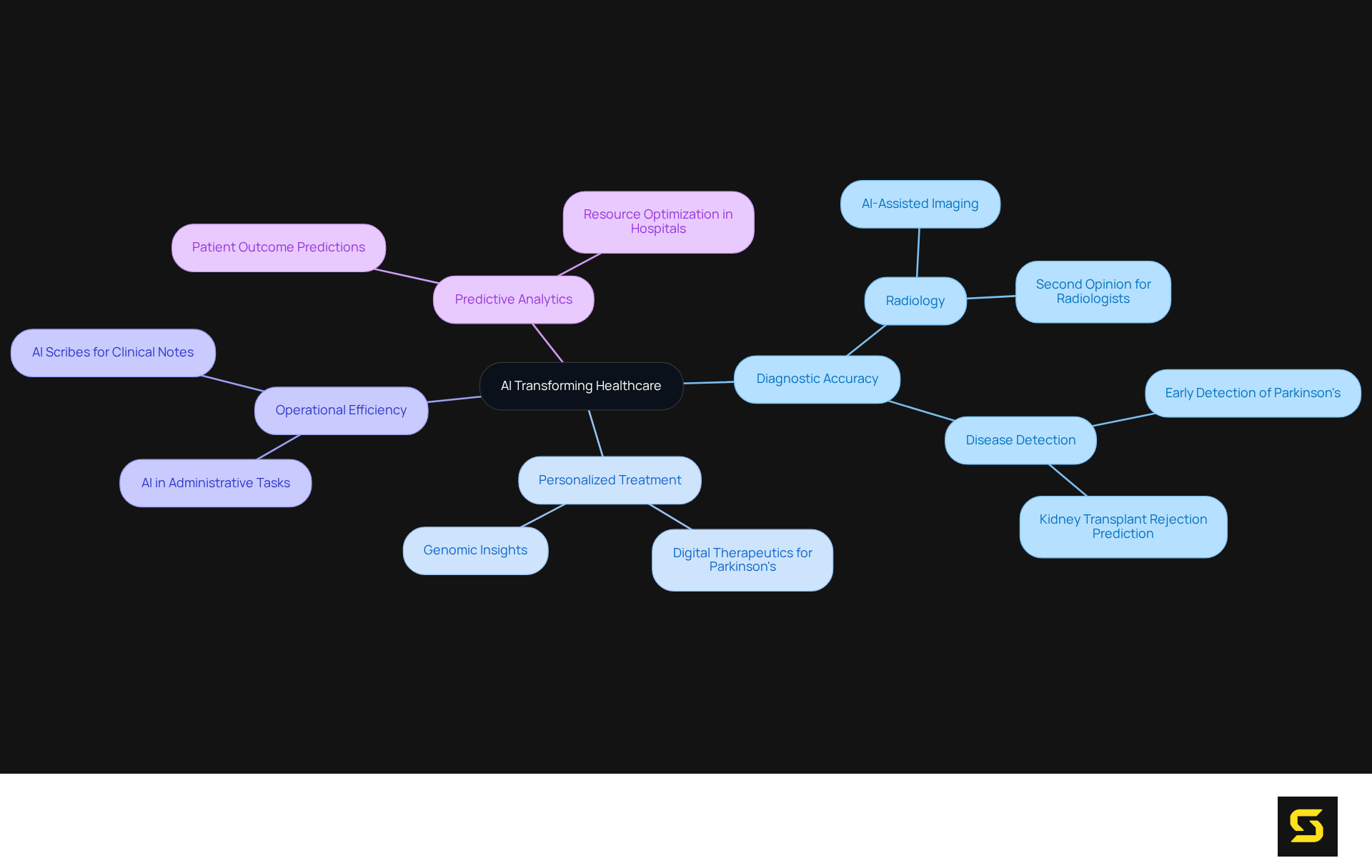
Telemedicine: Expanding Access to Healthcare Services
Telemedicine, a key aspect of healthcare technology advances, has emerged as a transformative force in medical services, significantly for individuals, particularly those in rural or underserved areas where medical facilities are often scarce. By leveraging video consultations and remote monitoring tools, healthcare providers can deliver timely care, effectively alleviating travel burdens and boosting client satisfaction. For instance, UP Health System's collaborations with board-certified telemedicine doctors have markedly improved access for individuals and reduced wait times, underscoring the effectiveness of such initiatives.
Moreover, telemedicine fosters ongoing engagement of individuals, enabling providers to monitor chronic conditions and adjust treatment plans as needed. Research indicates that increased telemedicine usage correlates with more visits and improved medication adherence, reinforcing the notion that telemedicine not only enhances access but also contributes to overall satisfaction. Notably, all Medicare beneficiaries can access telehealth services from their homes, further emphasizing the extensive accessibility of telemedicine.
However, challenges remain, particularly for individuals seeking telehealth services while out of state, which can complicate care continuity. As telehealth services continue to evolve, healthcare technology advances hold the promise of redefining the patient experience, ensuring that quality care is accessible to all, irrespective of geographical constraints. As Mehrotra aptly states, "Telemedicine has significant potential to make lives easier, to alleviate strain on individuals and the health system, and to strengthen the long-term relationships between individuals and providers that are vital for delivering high-value, high-quality care.
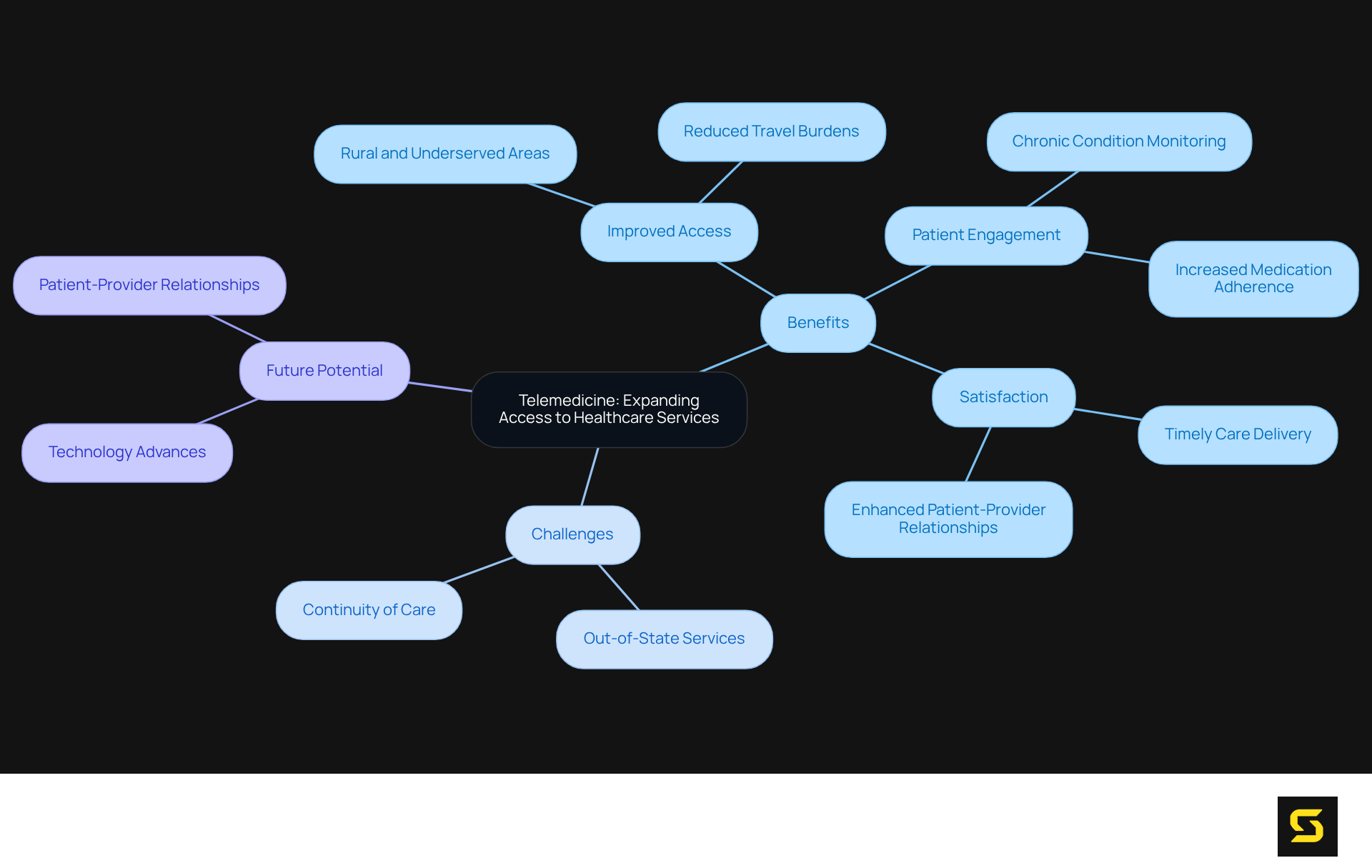
Wearable Technology: Real-Time Health Monitoring
Healthcare technology advances, such as wearable technology including fitness trackers and smartwatches, are revolutionizing medical care by facilitating real-time tracking of vital signs and activity levels. These innovative devices gather extensive data on heart rate, sleep patterns, and physical activity, offering crucial insights for both individuals and healthcare professionals. Notably, over 400,000 individuals are registered to receive tailored medical information, showcasing the escalating interest in personalized health management.
By enabling continuous health monitoring, wearables empower individuals to take control of their health management, promoting a proactive approach to wellness. Moreover, more than half of surveyed individuals indicated they would assume greater responsibility for their care if encouraged by healthcare providers, underscoring the potential for wearables to enhance user engagement.
This paradigm shift not only equips clinicians with timely information for informed decision-making and earlier interventions but also illustrates the of healthcare technology advances in enhancing health outcomes. Effective implementations, such as the integration of wearable devices in chronic condition management, further emphasize how healthcare technology advances enhance care for individuals.
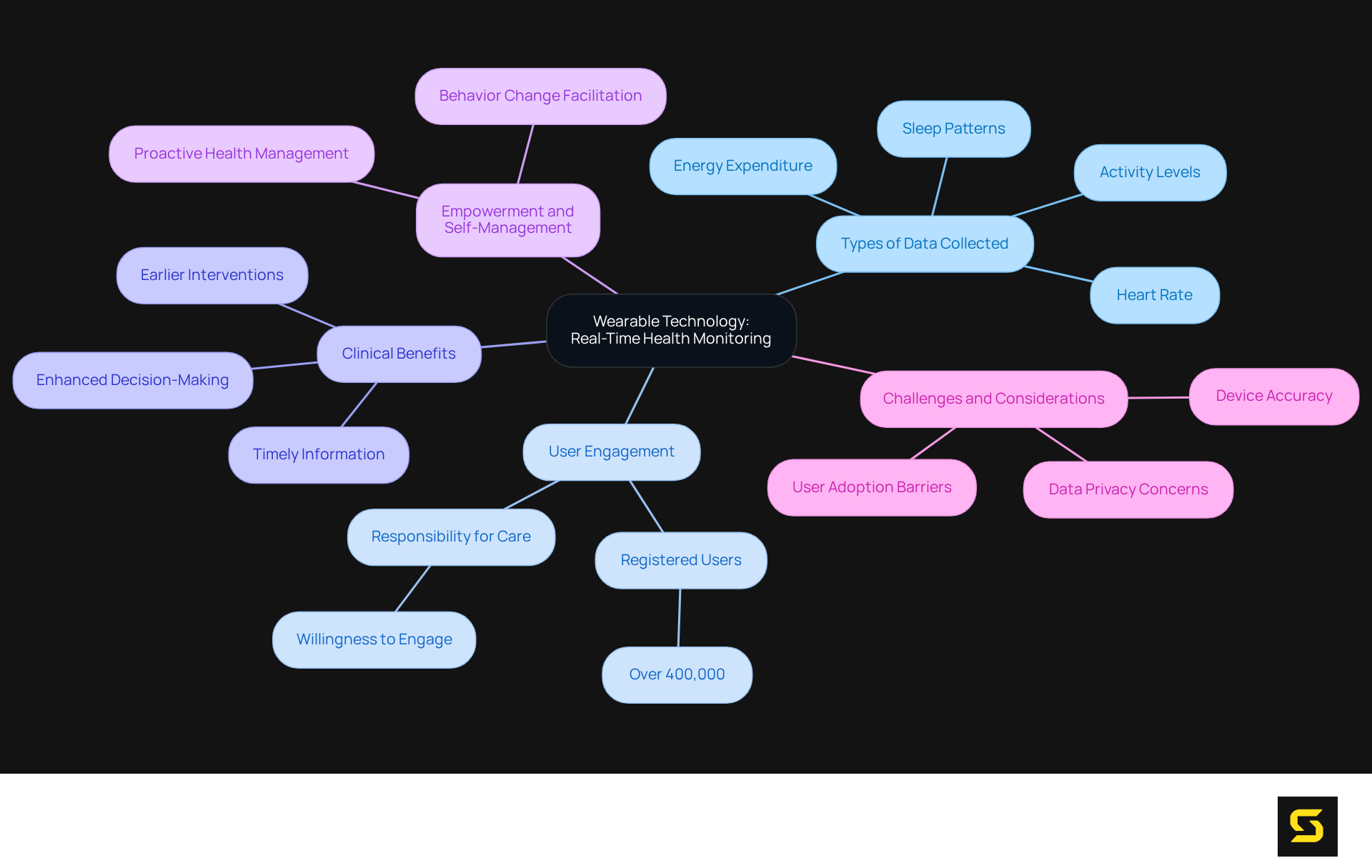
Blockchain Technology: Securing Healthcare Data
Blockchain technology is quickly emerging as a fundamental element in medical services, transforming how individual information is protected and exchanged. By establishing a decentralized and immutable ledger, blockchain effectively safeguards medical records against unauthorized access and tampering. This innovative approach not only strengthens information security but also among medical systems, facilitating seamless information exchange among providers.
As organizations implement blockchain solutions, they foster increased trust among individuals and ensure compliance with stringent information protection regulations. Notably, approximately 55% of medical applications are projected to adopt blockchain for commercial deployment by 2025, reflecting its growing significance in the industry.
Successful implementations, such as the MediLedger Project, illustrate how blockchain can enhance the traceability and security of pharmaceutical supply chains, while smart contracts streamline administrative processes, leading to improved efficiency and cost savings.
As Dr. Liz Kwo, Chief Commercial Officer of Everly Health, states, "Blockchain innovation addresses this risk by creating an environment where individual information is fragmented and distributed across a network, making it nearly impossible to hack or alter without detection."
By utilizing blockchain, healthcare technology advances allow providers to establish a more secure, efficient, and consumer-focused system, ultimately transforming care and outcomes.
SaaS product owners should contemplate incorporating blockchain into their solutions to enhance data security and bolster user trust.
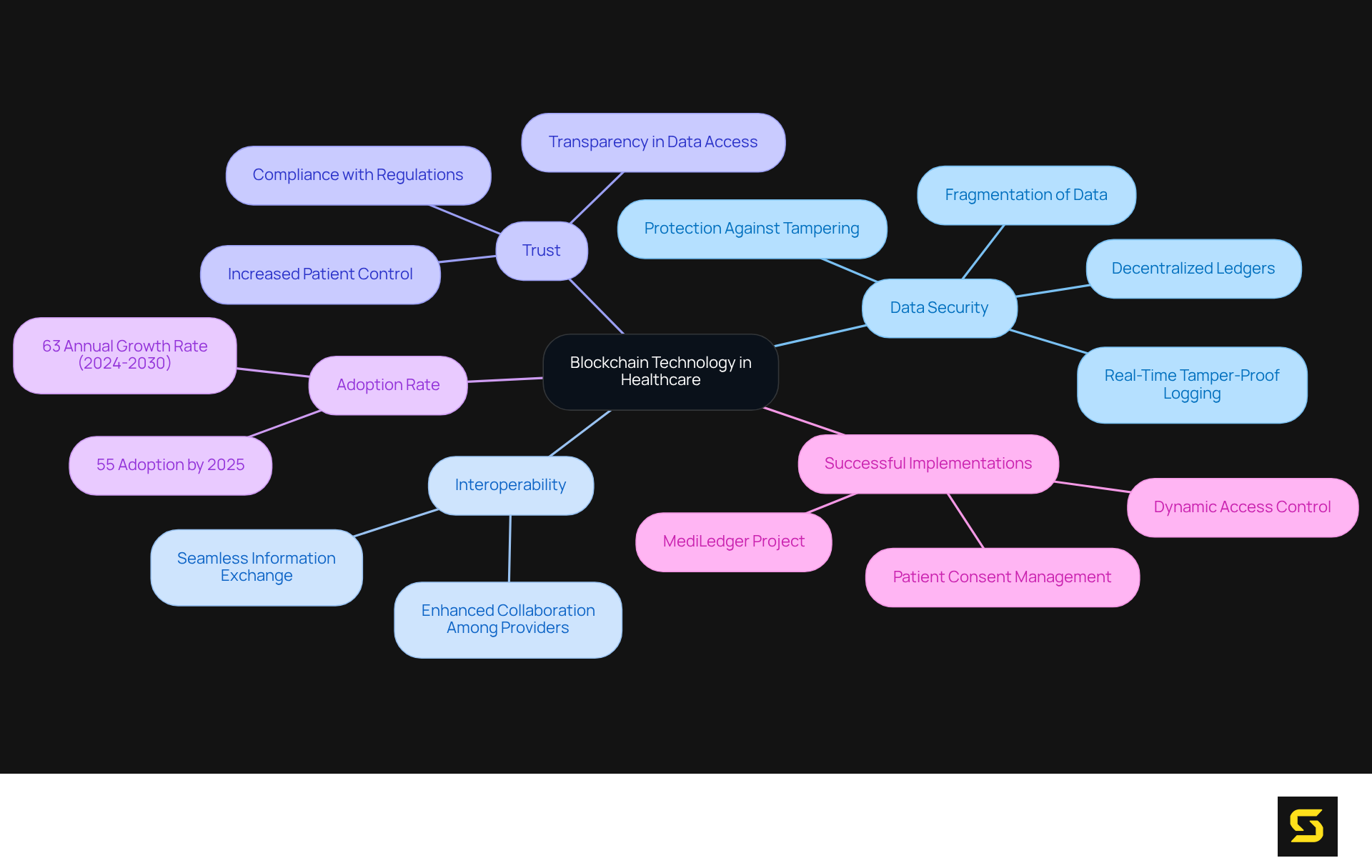
Robotic Surgery: Enhancing Precision in Surgical Procedures
Robotic surgery has transformed the surgical landscape, offering surgeons unparalleled precision and control during procedures. By leveraging advanced robotic systems, surgeons can perform minimally invasive surgeries with remarkable accuracy, resulting in smaller incisions, reduced blood loss, and faster recovery times for patients. This innovative technology proves especially advantageous in , such as prostatectomies and cardiac operations, where precision is paramount. As robotic surgery continues to evolve, it holds the promise of further improving patient outcomes and expanding the horizons of surgical interventions.
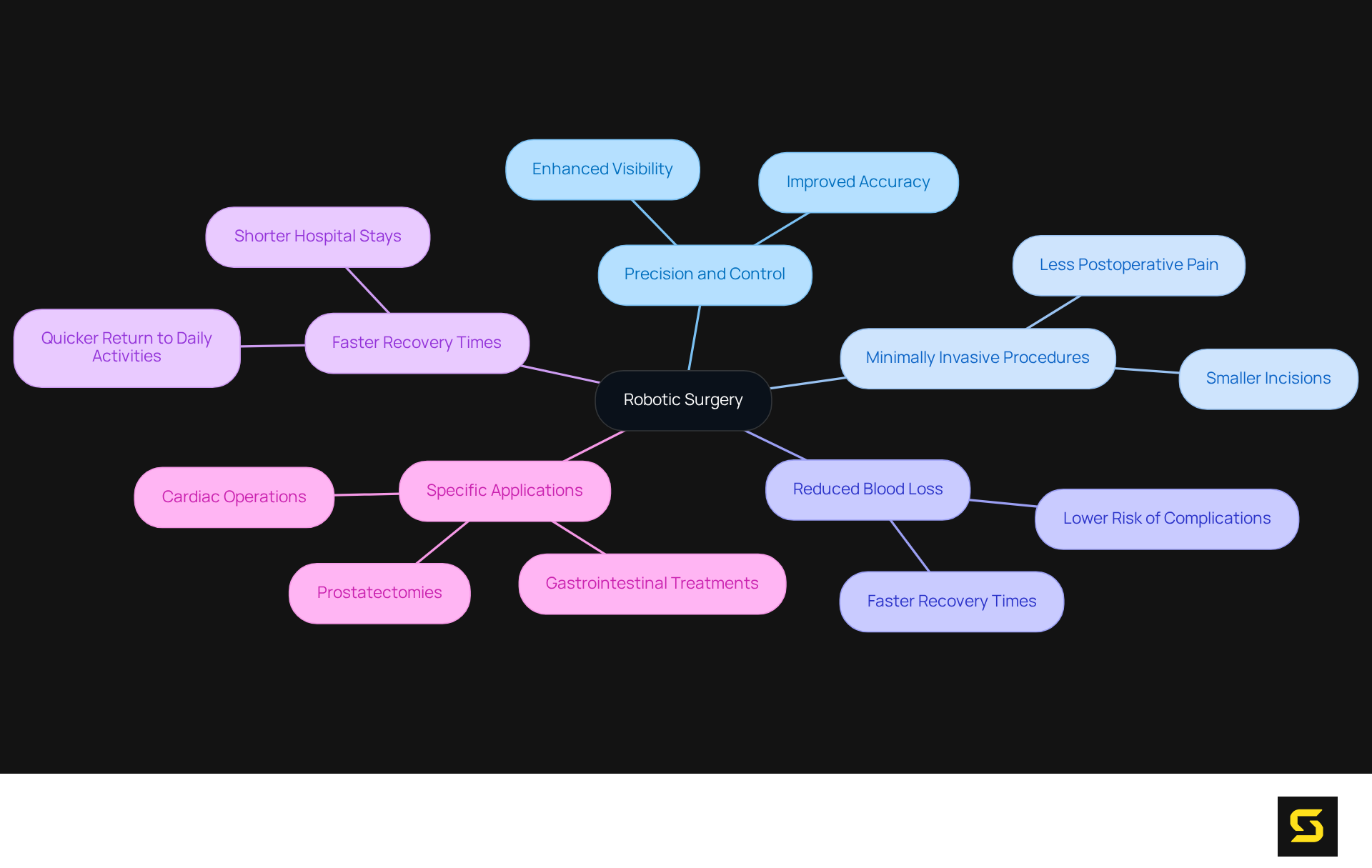
Big Data Analytics: Driving Data-Driven Healthcare Decisions
Big data analytics is revolutionizing medical services by equipping organizations with the capability to analyze vast amounts of individual data. This analytical prowess enables medical professionals to identify trends, for individuals, and enhance resource distribution effectively.
For example, predictive analytics is pivotal in pinpointing individuals at risk of developing chronic conditions, thereby facilitating early interventions and personalized care plans. A study indicates that hospitals employing predictive analytics have successfully decreased readmission rates by 22%, underscoring the concrete advantages of data-driven decision-making.
Furthermore, the global big data in healthcare market is anticipated to grow from USD 31.46 Billion in 2024 to USD 121.85 Billion by 2034, emphasizing the increasing importance and investment in big data analytics within the medical sector. As healthcare organizations progressively adopt these data-centric strategies, they not only enhance operational efficiency but also significantly improve outcomes for individuals, showcasing healthcare technology advances as an indispensable resource in modern healthcare.
Nevertheless, it is imperative to address the challenges associated with data privacy and security, as the surge in data utilization prompts concerns about safeguarding sensitive individual information.
As Ahmad Hassan, MD, articulates, "Big data enables predictive modeling to foresee individual needs and identify potential health risks before they become critical.
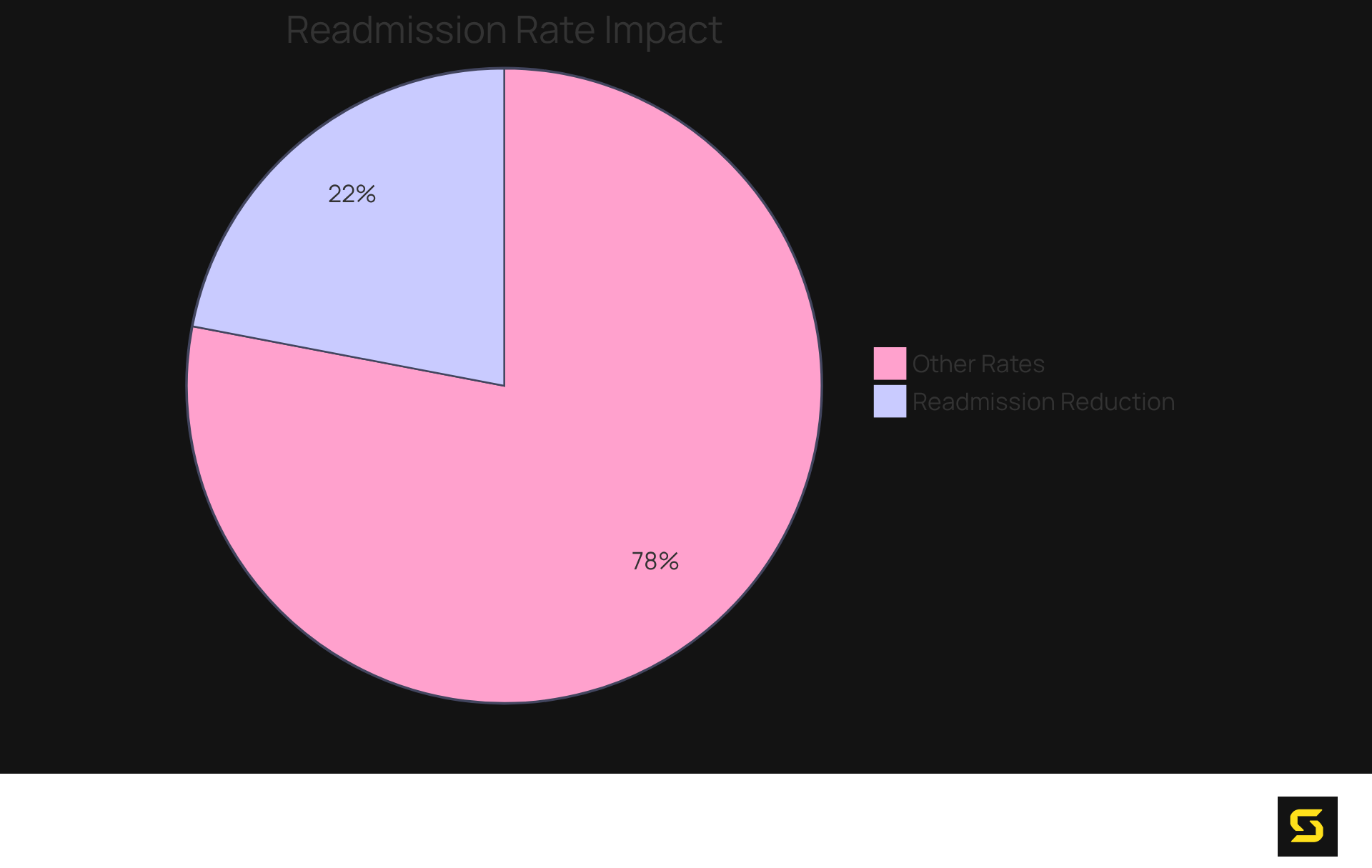
3D Printing: Customizing Medical Devices and Prosthetics
3D printing is revolutionizing the medical field by enabling the personalization of medical devices and prosthetics to meet the distinct needs of individuals. This cutting-edge technology facilitates rapid prototyping and the creation of complex structures, such as implants and surgical instruments, meticulously designed to fit a patient's unique anatomy. By leveraging 3D printing, medical providers can significantly reduce costs, accelerate production timelines, and enhance the overall quality of care.
The global 3D Medical Implants Market is anticipated to surge from USD 767.1 million in 2023 to USD 2,535.8 million by 2033, reflecting a compound annual growth rate (CAGR) of 12.7%. Furthermore, the broader medical 3D printing market is projected to expand from $2 billion in 2022 to $4 billion by 2026, representing a remarkable 21% CAGR. This growth is propelled by the increasing adoption of 3D printing across various medical specialties, as healthcare providers establish in-house 3D printing facilities to optimize operations.
Successful applications of this innovation are illustrated in numerous case studies. For example, the Vinmec hospital network in Vietnam successfully executed a Total Femoral Replacement surgery on an eight-year-old patient using a customized 3D printed implant, demonstrating the efficacy of tailored solutions in addressing complex medical conditions. Additionally, Children’s Nebraska has collaborated with UK-based Insight Surgery to integrate personalized surgical planning and device manufacturing, transforming their approach to intricate procedures.
As healthcare technology advances through innovations like 3D printing, they promise to further enhance the customization of prosthetics and medical devices, ultimately leading to improved patient outcomes and satisfaction. The rising prevalence of chronic conditions such as osteoporosis and arthritis is driving the demand for bespoke implant solutions, underscoring the importance of this innovation in modern healthcare. As Zachariah Page notes, "We simply use different colors of light in our 3D printing process to dictate where we’re getting our hard material that will ultimately snap into the structure that we have and the soft material that will ultimately provide you with that dampening." This insight highlights the that are shaping the future of medical device manufacturing.
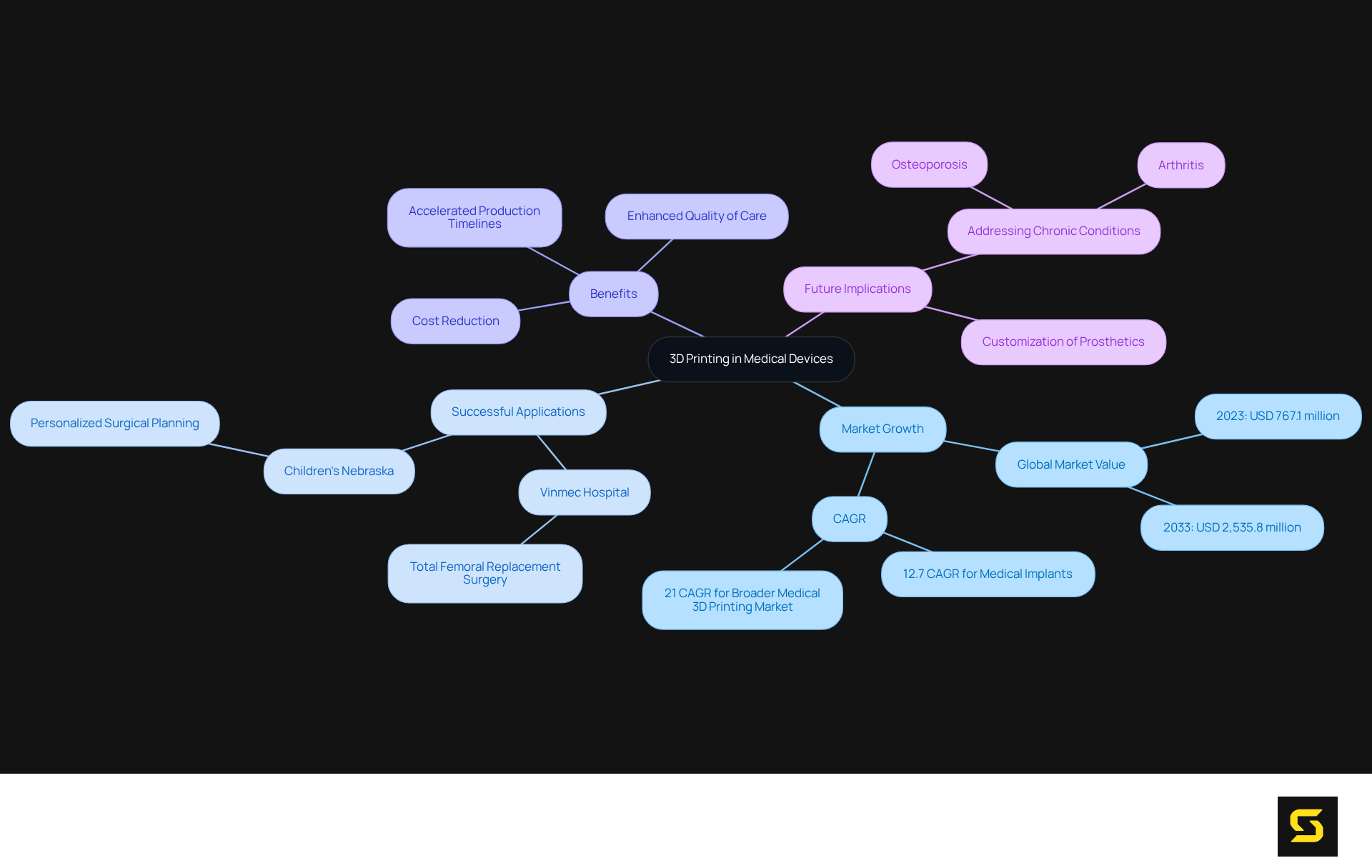
Nanotechnology: Revolutionizing Drug Delivery Systems
Nanotechnology is fundamentally transforming drug delivery systems, facilitating the creation of nanoscale carriers that deliver therapeutics with remarkable precision. These advanced systems are meticulously designed to target specific tissues or cells, significantly enhancing treatment efficacy while minimizing adverse side effects. Notably, nanoparticle-based drug delivery has demonstrated improved bioavailability of medications and enabled controlled release, ensuring drugs are administered at optimal times and dosages.
Recent advancements, such as the metal-biomolecule network (MBN) system, exemplify this progress. This system utilizes non-toxic metal ions and biomolecules to create that effectively target tumors and activate the immune response locally, without affecting healthy tissues. Such innovative approaches not only increase the success rates of drug development but also address the high failure rates associated with traditional drug carriers, where only about one in 10,000 drug compounds reaches market approval due to safety issues.
Additionally, these nanoparticles can carry up to 40% of the chemotherapy drug doxorubicin by weight, showcasing their practical implications in enhancing treatment efficacy. As research in nanotechnology continues to evolve, healthcare technology advances hold the promise of revolutionizing drug delivery and significantly improving patient outcomes across various medical fields.
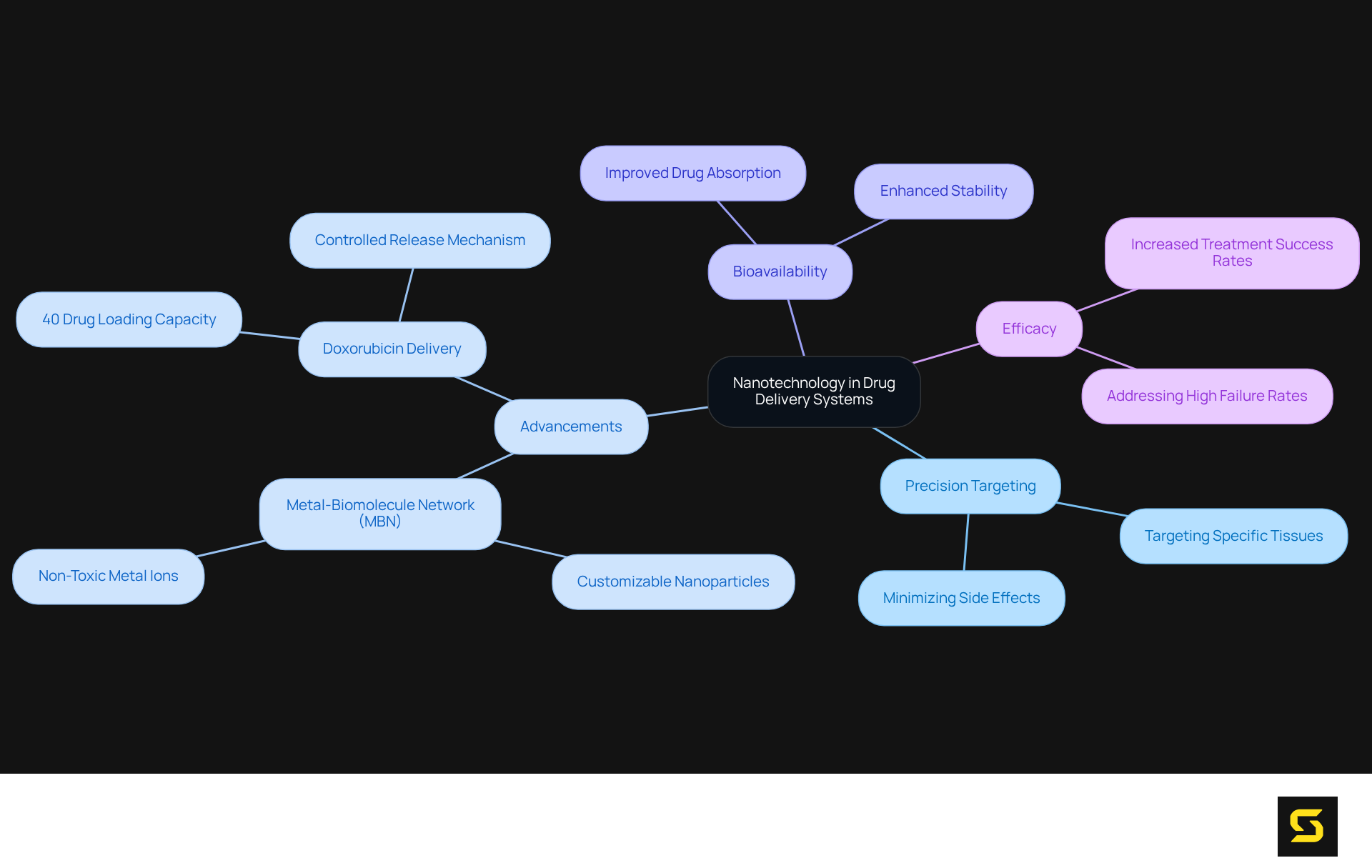
Virtual Reality: Training and Therapeutic Applications in Healthcare
Virtual reality (VR) is revolutionizing healthcare through its in both training and therapeutic settings. In medical education, VR provides immersive simulations that empower students and professionals to practice intricate procedures in a risk-free environment, significantly enhancing their skills and confidence. Research indicates that surgical trainees utilizing VR make 40% fewer technical mistakes compared to conventional training methods, while also executing procedures more effectively. This underscores the system's effectiveness in advancing clinical skills.
In therapeutic contexts, VR is proving invaluable for treating conditions such as PTSD and anxiety. By creating controlled settings for exposure therapy, individuals can confront their fears within a secure environment. Notably, retention rates for those participating in VR-assisted therapy exceed 80%, as highlighted by the University of Southern California’s Institute for Creative Technologies. Furthermore, VR has demonstrated the ability to reduce pain intensity by as much as 24% during acute episodes, a method supported by clinical studies from Cedars-Sinai Medical Center, offering a compelling non-pharmacological alternative for pain management.
Moreover, VR innovations are being explored for their potential in medical device training, allowing medical professionals to familiarize themselves with new equipment in a simulated environment. As VR technology continues to advance, its capacity to enhance both healthcare technology advances and patient treatment outcomes becomes increasingly evident, establishing it as an essential tool in the future of medical practice.
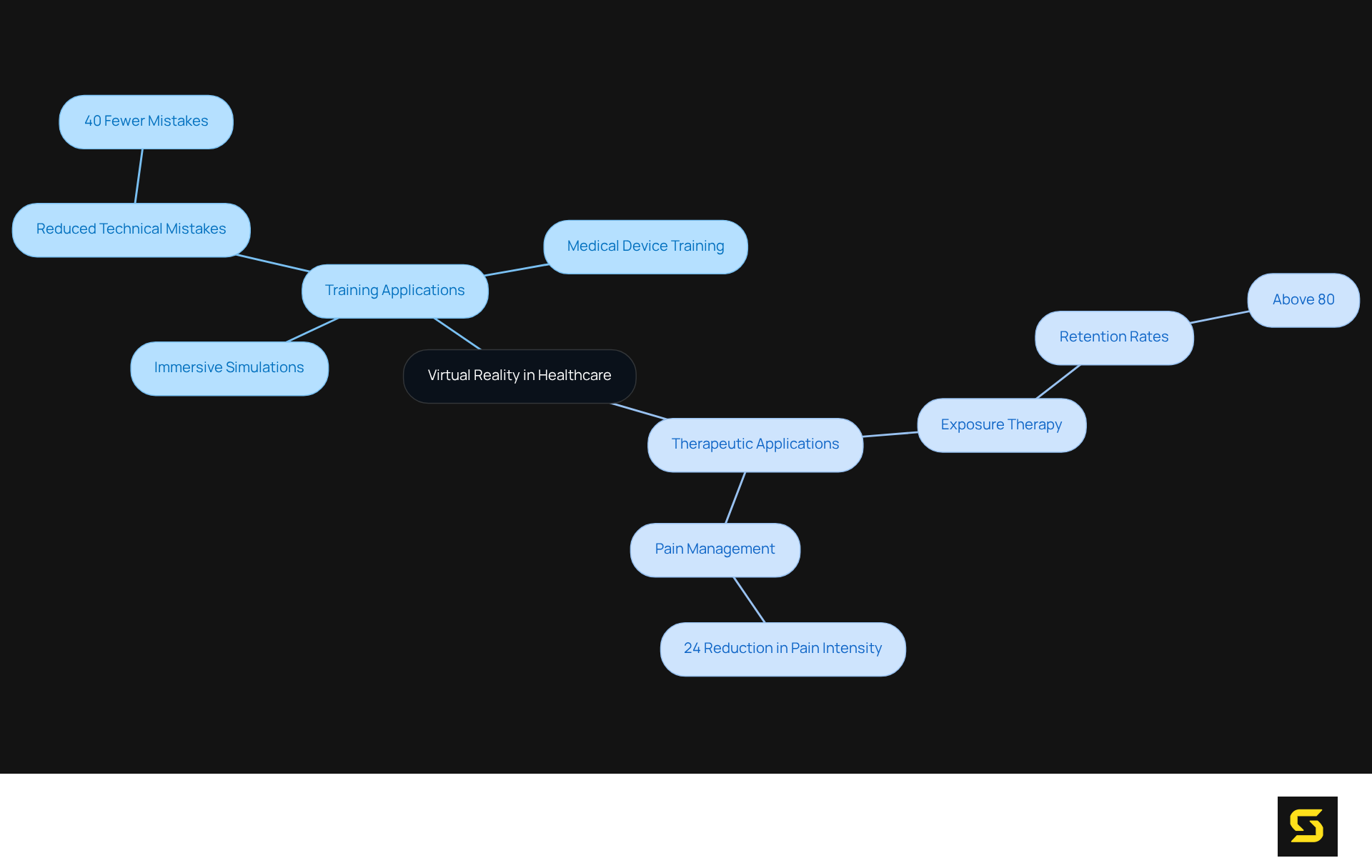
Conclusion
The advancements in healthcare technology are undeniably reshaping the landscape of patient care, emphasizing the critical role of innovation in enhancing outcomes and accessibility. From custom software solutions to artificial intelligence and telemedicine, these technologies are streamlining operations and personalizing care to meet the unique needs of individuals. As healthcare continues to evolve, it is imperative for medical organizations to embrace these technologies in order to elevate the quality of care delivered to patients.
Key insights from the article underscore how various technologies—such as AI-driven diagnostics, wearable devices, and blockchain—are making significant strides in transforming healthcare. The integration of telemedicine has notably expanded access to care, particularly for underserved populations, while big data analytics and 3D printing are enabling more precise and customized treatment options. Each of these innovations contributes to a more efficient healthcare system, ultimately fostering better patient engagement and satisfaction.
In light of these advancements, healthcare providers must remain proactive in adopting and integrating these technologies into their practices. By doing so, they not only enhance operational efficiency but also pave the way for improved patient outcomes. As the healthcare landscape continues to change, embracing these innovations is vital to ensuring that quality care is accessible to all, thereby reinforcing the significance of technology in modern healthcare.
Frequently Asked Questions
What is SDA and what services do they provide?
SDA specializes in custom software development for healthcare solutions, focusing on personalized software that addresses the unique challenges faced by medical service providers. They enhance healthcare technology, streamline operations, and improve data management.
How does custom software impact patient outcomes in healthcare?
Medical organizations using custom software have reported significant improvements in patient outcomes, including a 40% decrease in hospital readmissions and a 24% reduction in emergency room visits, largely due to AI-driven analysis.
What are some anticipated benefits of healthcare technology advances by 2025?
By 2025, 71% of medical executives expect that healthcare technology advances, including AI, will enhance profitability, operational efficiency, and the ability to deliver more tailored care.
What standards does SDA adhere to in their software development?
SDA ensures that their software meets specific requirements while adhering to HIPAA standards, emphasizing quality assurance and reliability.
What role does Artificial Intelligence (AI) play in healthcare?
AI is transforming healthcare by enhancing diagnostic accuracy, personalizing treatment plans, and analyzing clinical data to identify patterns that predict health outcomes, thus improving the speed and precision of diagnoses.
Can you provide examples of AI applications in healthcare?
AI tools assist radiologists in detecting anomalies in imaging studies, predict kidney transplant rejection risks, and have been successfully applied in digital therapeutics for Parkinson's disease to enhance patient engagement.
How has telemedicine changed access to healthcare services?
Telemedicine has significantly improved access to healthcare, especially for individuals in rural or underserved areas, by enabling video consultations and remote monitoring, thereby reducing travel burdens and wait times.
What are the benefits of telemedicine for chronic condition management?
Telemedicine allows for ongoing engagement and monitoring of chronic conditions, leading to better medication adherence and overall patient satisfaction.
Are there any challenges associated with telemedicine?
Yes, challenges remain, particularly for individuals seeking telehealth services while out of state, which can complicate care continuity.
What is the overall impact of telemedicine on the patient experience?
Telemedicine has the potential to redefine the patient experience by ensuring quality care is accessible regardless of geographical constraints, thereby strengthening the relationship between patients and healthcare providers.





